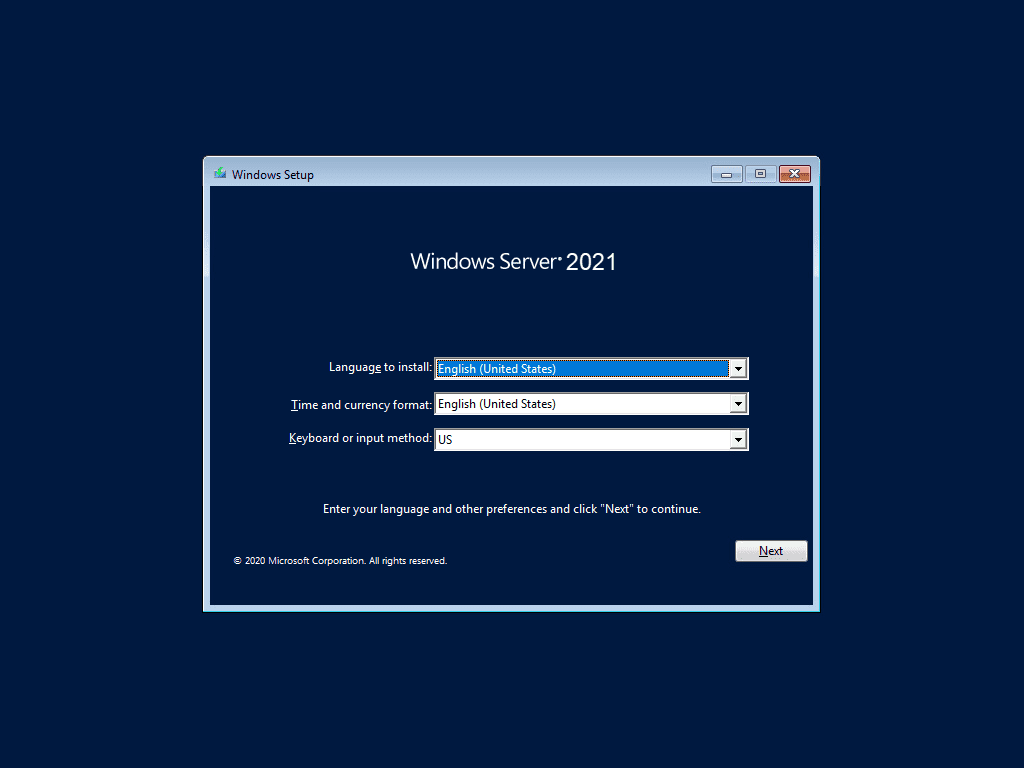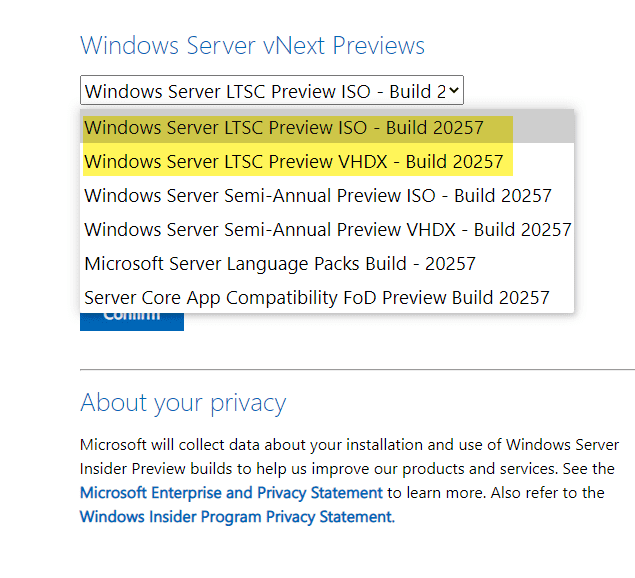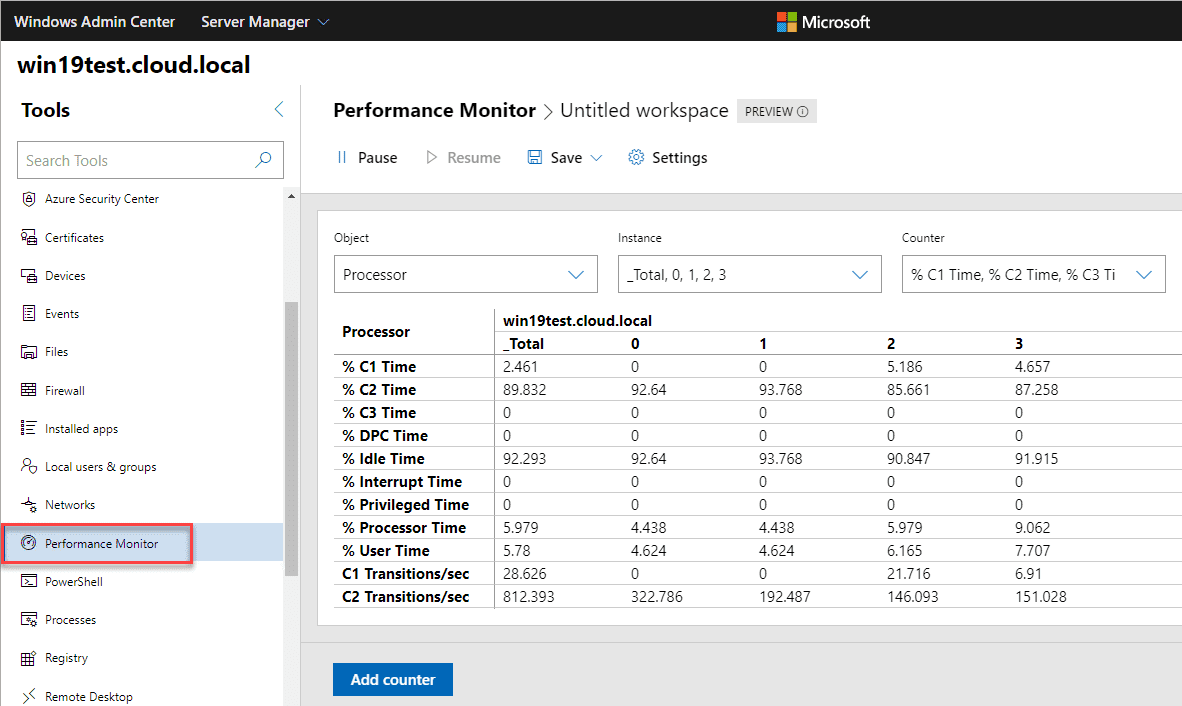Windows Server 2021 Preview Build Features

***Update*** The next version of Windows Server is Windows Server 2022. See below.
It seems like Windows Server 2019 is still a new operating system. However, it is hard to believe, but it is over two years old now, and we are starting to look ahead to Windows Server 2021. Even though many are focused on cloud IaaS and other platforms, on-premises Windows Server is still very much a “thing” that serves a need. Hybrid infrastructure is most likely here to stay. Some organizations are even repatriating their environments back on-premises to offset huge cloud spends. Microsoft showcases the features and functionality in upcoming Windows releases with the Windows Insider Preview vNext builds. It is no secret that these preview builds show the features of the next version of Windows Server. Let’s take a look at Windows Server 2021 preview build features.
Windows Server 2021 Preview Build Features
The latest release of the Long-term servicing channel (LTSC) is Windows Server Preview Build 20257. However, let’s start with build 20201 features.
Let’s take a look at the features that have been added in the Microsoft announced vNext Preview Builds 20201, 20206, and 20257.
- UDP performance improvements – More and more applications are using UDP as it is much more lightweight than TCP. The QUIC protocol that we have no doubt heard about and read about is actually built on top of UDP. RTP and other UDP streaming and gaming protocols are making use of UDP. With vNext Preview build 20201, UDP segmentation offload (USO) moves UDP processing (offloading) to the NIC. Also, UDP Receive Side Scaling or RSS reduces CPU usage even further. Even more, improvements have been added to the UDP protocol in Windows itself as well.
- TCP performance improvements – TCP HyStart++ reduces packet loss when connections are starting up, especially on high-speed networks. This helps to reduce retransmit timeouts. These are enabled by default.
- **PktMon support in TCP/IP – PktMon is a cross-component network diagnostics tool with TCP/IP support providing visibility into the network stack. It is useful for packet capture, packet drop detection, packet filtering, and is also built for containerized networking and SDN.
Virtualization:
Virtualization has not been left out as well. Receive Segment Coalescing (RSC) in the Hyper-V vSwitch enables packets to be coalesced and processed as one larger segment upon entry in the virtual switch. This helps to reduce CPU cycles. In vNext Windows Server builds, segments will remain coalesced across the entire data path until processed by the intended application. This helps in a couple of different scenarios, including:
- Traffic is received from an external host
- Traffic is received from a virtual NIC to another virtual NCI on the same host
Direct Server Return (DSR) load balancing support for containers and Kubernetes
- It helps to achieve increased network performance for your applications with little or no infrastructure changes.
- Allows asymmetric network load distribution allowing request and response traffic can use a different network path. This can help to avoid extra router hops and reduce latency and improve response time.
Virtual Machine Role Affinity/AntiAffinity rules with WSFC
Flexible BitLocker protector for failover clusters
- The requirement for domain-joined clusters to use BitLocker encryption has been removed.
With vNext, a new BitLocker key is stored locally and encrypted since no CNO is present from Active Directory. This allows encrypting data at-rest in edge locations, workgroup clusters, and multidomain clusters.
New Cluster Validation network tests
- New tests have been implemented to verify the cluster networking before creating a new cluster. These include:
List Network Metric Order (driver versioning)
Validate Cluster Network Configuration (virtual switch configuration)
Validate IP Configuration Warning
Network Communication Success
Switch Embedded Teaming Configurations (symmetry, vNIC, pNIC)
Validate Windows Firewall Configuration Success
QOS (PFC and ETS) have been configured
Server Core images are 20 percent smaller
- The name of the game with container images is small, small, small
- The 20 percent reduction in size has come about by optimizing .NET pre-compiled native images
New SMB protocol features
- SMB now supports AES-256 encryption. There is increased performance when using SMB encryption or signing with SMB direct with RDMA enabled network cards. SMB can now also do compression to increase performance further
- East-West storage encryption – Windows Server failover clusters now support granular control of encrypting and signing intra-node storage communications for Cluster Shared Volumes (CSV) and the storage bus layer (SBL). When using S2D, you can decide to encrypt or sign east-west communications within the cluster itself for higher security.
Storage Migration Service (SMS)
Storage migration service is getting new features including:
- AFS Tiering support preview – migrating data to a server configured with Azure File Sync cloud tiering. This new feature will allow overprovisioning storage while dehydrating data to Azure Files in the cloud. It can slow or pause transfers to allow AFS to catch up with syncing and tiering processes. This will update the Windows Admin Center plugin for SMS, which will be updated in the Windows Admin Center plugin updates.
- New migration scenarios include – Cluster, samba-Linux migration support, local security principal migration, and inter-network migration
Download Windows Server 2021 vNext Preview
To download the next preview version of Windows Server, you have to sign up for the Windows Server Insider Preview build subscription. This is a simple form that allows you to join the Windows Server insider preview program. This will allow downloading the vNext preview builds as these are released.
To sign up/download, go here:
Once you are signed up and ready to download, you choose the Windows Server vNext Preview release you want to download and the language of the download. Options include:
- Windows Server LTSC Preview ISO – Build 20257
- Windows Server LTSC Preview VHDX – Build 20257
- Windows Server Semi-Annual Preview ISO – Build 20257
- Windows Server Semi-Annual Preview VHDX – Build 20257
- Microsoft Server Language Packs Build 20257
- Server Core Compatibility FoD Preview Build 20257
After you download the ISO, you will be able to mount the ISO on your virtual machine and install it as expected. Windows Server 2021 (vNext Preview) 20257 is available in the Long-Term Servicing Channel (LTSC) for download. This means you can install the Desktop Experience or server core of the Windows Server operating system.
With the semi-annual channel, you can only install Windows Server Core installation options. The picture below, I admit, has been doctored to show Windows Server 2021. However, will we soon see the Windows Setup screen change from Windows Server 2019 to Windows Server 2021? Most likely.
Update – Windows Server 2022 is the next version of Windows Server
See my blog post covering the naming here:
Wrapping Up
Windows Server 2021 Preview Build Features show this will be a milestone Windows Server release with many new improvements under the hood. These will include features covering the gamut of Windows functionality, both on-premises and in hybrid environments.
Microsoft continues to improve the architecture of Windows Server to be more adept at virtualization and containerized workloads. Improved performance and security features are also in the vNext builds that are undoubtedly showcasing features for Windows Server 2021. Stay tuned for more Windows Server 2021 news and updates.











